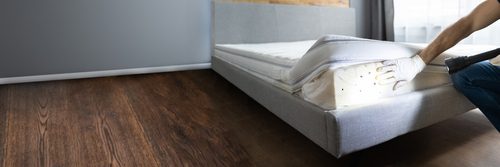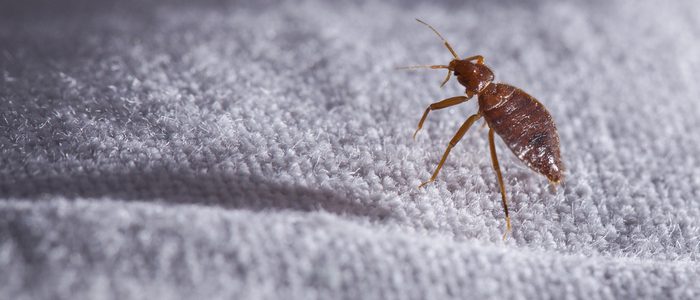Where Do Bed Bugs Come From?
Bed bugs re-emerged as a major pest problem in the mid-1990s after nearly disappearing for decades prior. Now bed bugs are back, and they’re back with a vengeance. Bed bugs have spread across the US, infecting nearly every city, suburb, and town. Today, they’re one of the most common pests homeowners call experts about every day.
People often ask: How did I get bed bugs? The simple answer is that you picked them up somewhere. People who travel are more susceptible as bed bugs are common in hotels, airports and other hubs. They hitch a ride on clothing or luggage and then multiply once they safely establish themselves in your home.
Bed bugs don’t spread disease, but they do (infamously) feed on human blood. They bite you in your sleep to get the protein rich nutrients they need to produce eggs. These bed-infesting pests spread and entrench themselves in homes very easily and are hard to get rid of without professional help. If you suspect you have an infestation, we recommend getting in touch as soon as possible. Professional treatments are the only sure way to keep bed bugs from continuing to spread through your home… and bed.

How to Tell if You Have Bed Bugs
There are two steps to Gregory’s smarter, effective bed bug control: finding the bugs and wiping them out. Each of these parts is essential: if we don’t both find and eliminate every single bug, the infestation could start again. Luckily, Gregory has proven Smarter Solutions for both aspects of treatment. We find your entire infestation and make sure to wipe it out completely. Here’s how we do it:
Step One: Bed Bug-sniffing Dog Identification
Do bed bugs have a smell? They do and Gregory trains bed bug-detection dogs to locate infestations by sniffing out his unique odor. Our dogs are specially trained to sniff out bed bugs at every stage of development. They don’t just find adult bed bugs; they find the eggs and larvae bed bug infestations create, too.
Using our canine unit, we can locate every bed bug hideout through your home. Bed bugs aren’t always just in your bed; we know how to find bed bugs in your carpet, headboard, closet, and anywhere else they may be hiding. Once we’ve identified where bed bugs are hiding in your home, we can begin wiping them out.
Step Two: Thermal Remediation® Heat Treatment
Does heat kill bed bugs? Yes and Thermal Remediation heat treatment is the most effective, least intrusive, and most environmentally-friendly way to combat bed bugs. Our experts subject each of the treatment areas identified in step 1 to concentrated heat treatments of 120° F or higher. We circulate this hot air using fans and monitor the process for four hours of application. We may also apply residual insecticides into cracks and crevices to eliminate bed bugs that might elude the heat. After treatment, we’ll conduct a final follow-up inspection to ensure that all bed bugs were eliminated successfully.
Thermal remediation is effective because applied 120° F heat kills bed bugs at every stage of development. We can completely eliminate bed bug eggs, larvae, and adults using one process. Residual pesticides serve to eliminate stragglers in hard-to-reach areas unobtrusively. With heat remediation, you don’t have to worry about infestations “reviving” because we get the eggs, too. Overall, thermal remediation is the Smarter Solution to residential bed bug infestation problems.
Thermal Remediation® and related logo is a trademark owned by TEMP-AIR, Inc. and is used by permission.
The longer you wait to deal with a bed bug infestation, the more the pests can spread. If you have bed bug questions, our technicians can help. We answer calls everyday from concerned homeowners asking how to tell if a mattress has bed bugs. Call Gregory today for a Smarter bed bug control solution that’s guaranteed.

